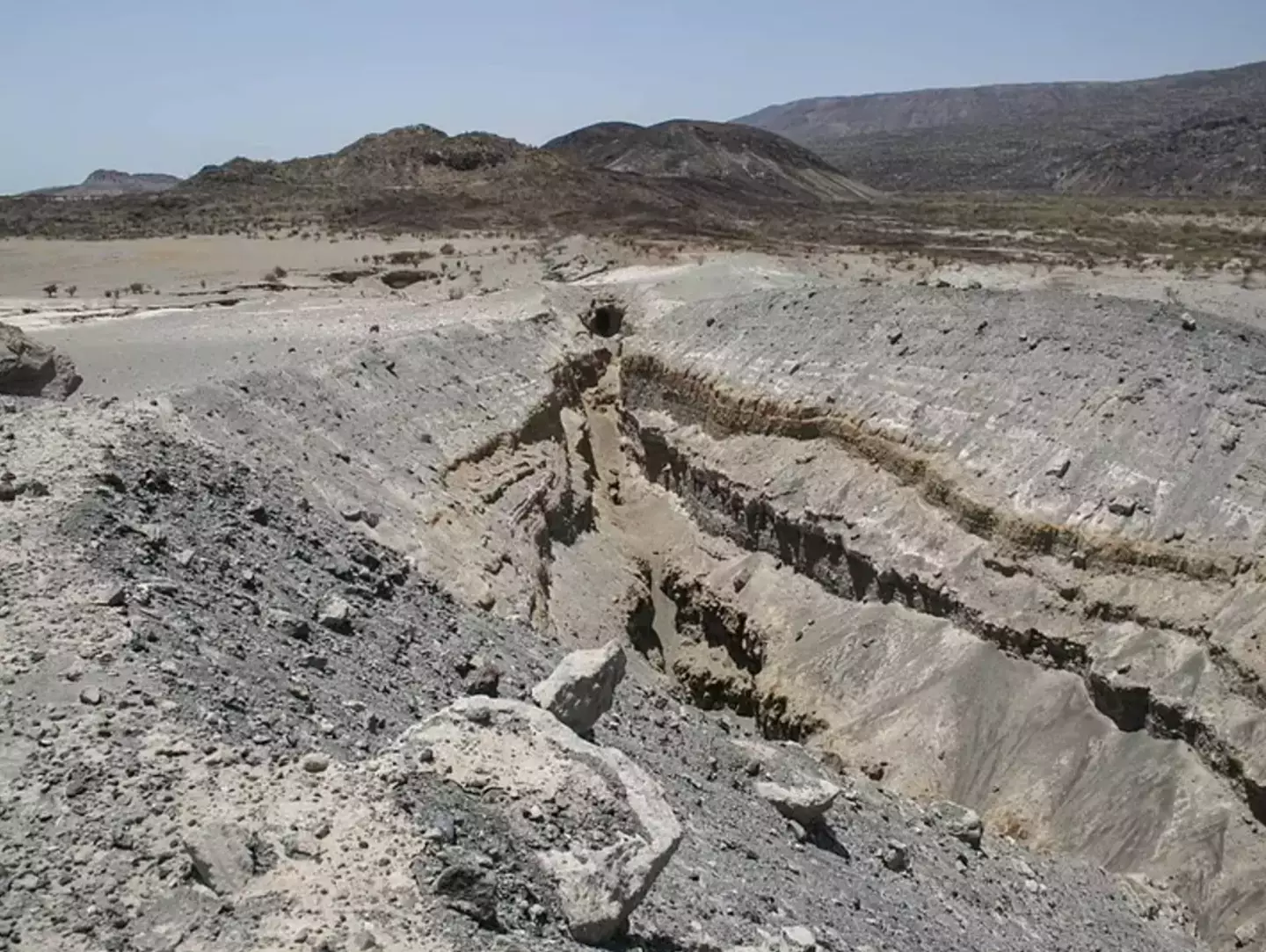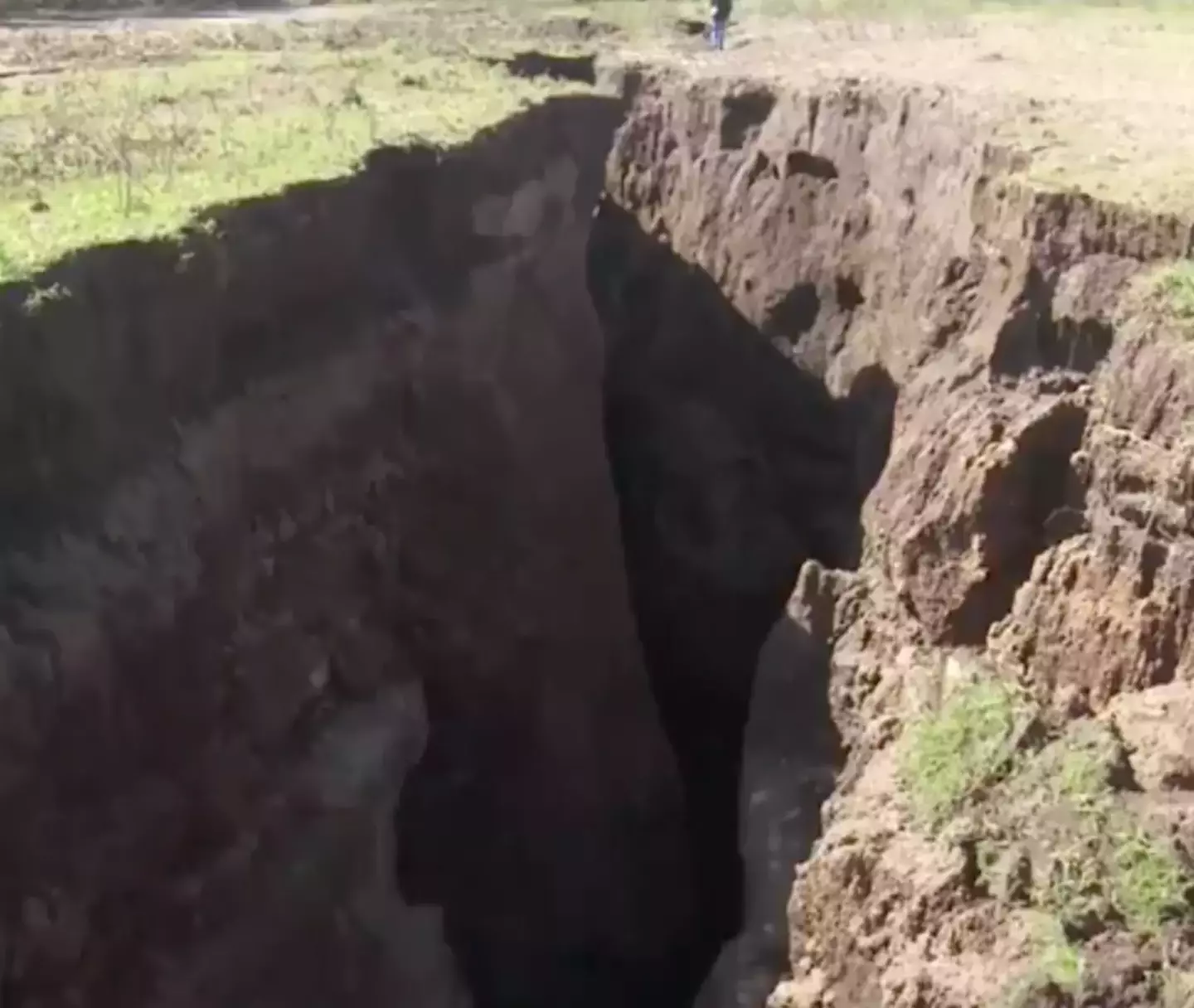Featured Image Credit: Julie Rowland, University of Auckland / BBC
Shocking photographs released last year show the continent of Africa splitting apart as a new ocean starts to form.
Thanks to a variety of different factors, our planet is ever changing – something which is creating grave concern for a lot of folks.
While the changes that are happening to our planet aren’t always obvious, photographs are a pretty good way of showing the true story. And snaps released into the public domain in 2023 showcased just how deep the damage is as parts of Africa are literally falling apart.
Two parts of land in Kenya have begun to split apart over recent years, something which has come as a shock to those who reside there.
In fact, the two masses are that far apart, that a new ocean is forming between them. And in the future, that ocean will be well and truly up and running.

Africa is literally splitting apart. (Julie Rowland, University of Auckland)
It’s not just Kenya that is impacted though, as it’s thought that the African countries of Zambia and Uganda could one day have their own coastlines.
And those who know just the slightest bit of Geography, will know these countries are currently landlocked.
Expert research has also confirmed that a new ocean will one day run through the gap, named the East African Rift, millions of years from now.
According to the peer-reviewed journal Geophysical Research Letters, experts now know the exact spot where the crack began as the borders of three tectonic plates that have been gradually moving away from each other.
The international effort has discovered that the crack currently runs 35 miles long after first appearing back in 2005 in the Ethiopian deserts.
Christopher Moore, a Ph.D. doctoral student at the University of Leeds, told NBC News: “This is the only place on Earth where you can study how continental rift becomes an oceanic rift.”
Moore utilised satellite radar technology to monitor volcanic activity in the East African region most commonly associated with the continent’s gradual breakup.
The crack resides on the borders of the boundaries of the African, Arabian and Somali tectonic plates.

The crack is causing huge concern. (BBC)
For the past 30 million years, the Arabian plate has been slowly moving away from the African continent.
The gap is growing but not so quickly that you’ll see it by looking at it, as the Arabian plate is moving away from Africa at a rate of approximately one inch per year.
It’s slower for both the African and Somali plate though, as they are reported to be breaking away at an even slower rate, at round half an inch to 0.2 inches every year.
It’s thought that the gap will continue to widen in the future, to the point where East Africa will form its own separate continent.
Ken Macdonald, a marine geophysicist and professor emeritus based at the University of California, explained: “With GPS measurements, you can measure rates of movement down to a few millimetres per year.
“As we get more and more measurements from GPS, we can get a much greater sense of what’s going on.
“The Gulf of Aden and the Red Sea will flood in over the Afar region and into the East African Rift Valley and become a new ocean, and that part of East Africa will become its own separate small continent.”
Topics: Nature, Science, World News

Dr. Thomas Hughes is a UK-based scientist and science communicator who makes complex topics accessible to readers. His articles explore breakthroughs in various scientific disciplines, from space exploration to cutting-edge research.

-2.webp)






